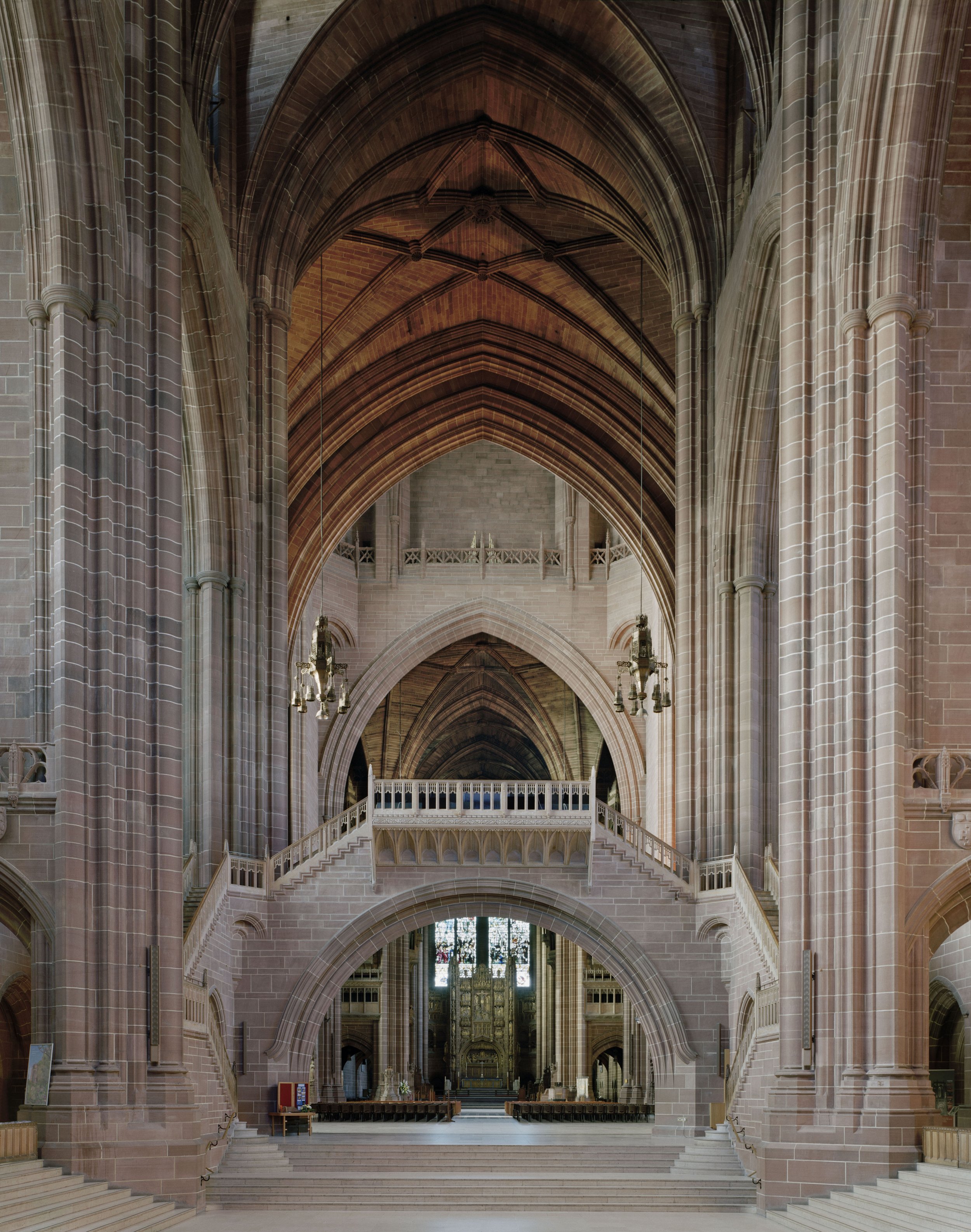Liverpool Cathedral
Liverpool Cathedral
With the approach of this Cathedral’s centenary, we were commissioned to produce a Conservation Plan to complement and substantiate the Cathedral’s Strategic Plan and the targets of its ‘24 for 2024’ fundraising campaign.
Liverpool’s Anglican Cathedral is one of the greatest buildings of the twentieth century. Built in a series of phases, beginning in 1903 and concluding in 1978, the Cathedral is celebrated as the major work of Giles Gilbert Scott. It is to a remarkable degree Scott’s vision realised on a colossal scale and integrating an array of some of the most interesting applied arts and artists of the period.
The Cathedral is significant for being the last and possibly largest traditional mass masonry structure in the country, and more than any other post-medieval cathedral it is a building which people have taken to their hearts, because of its sheer architectural power, charisma and the memories which it embodies. It is a central part of Liverpool’s identity.
This convergence between the aims of conservation and the mission of the Cathedral is evident in every aspect of the project. The Plan represents a great stock-taking exercise, the first to be undertaken at the Cathedral since it was completed. It also offers a first engagement with the matter of significance of the building and its constituent parts; the significance of much older cathedrals has generally been well tested over time, but at Liverpool this process is only just beginning.
Through site visits, archival research and comprehensive consultation, we developed policies to guide the care and maintenance of fabric that is ‘coming of age’, to improve its poor setting so as to better connect it with the heart of the city; and to encourage its celebration at a national and international level.
Client: Chapter of Liverpool Anglican Cathedral



